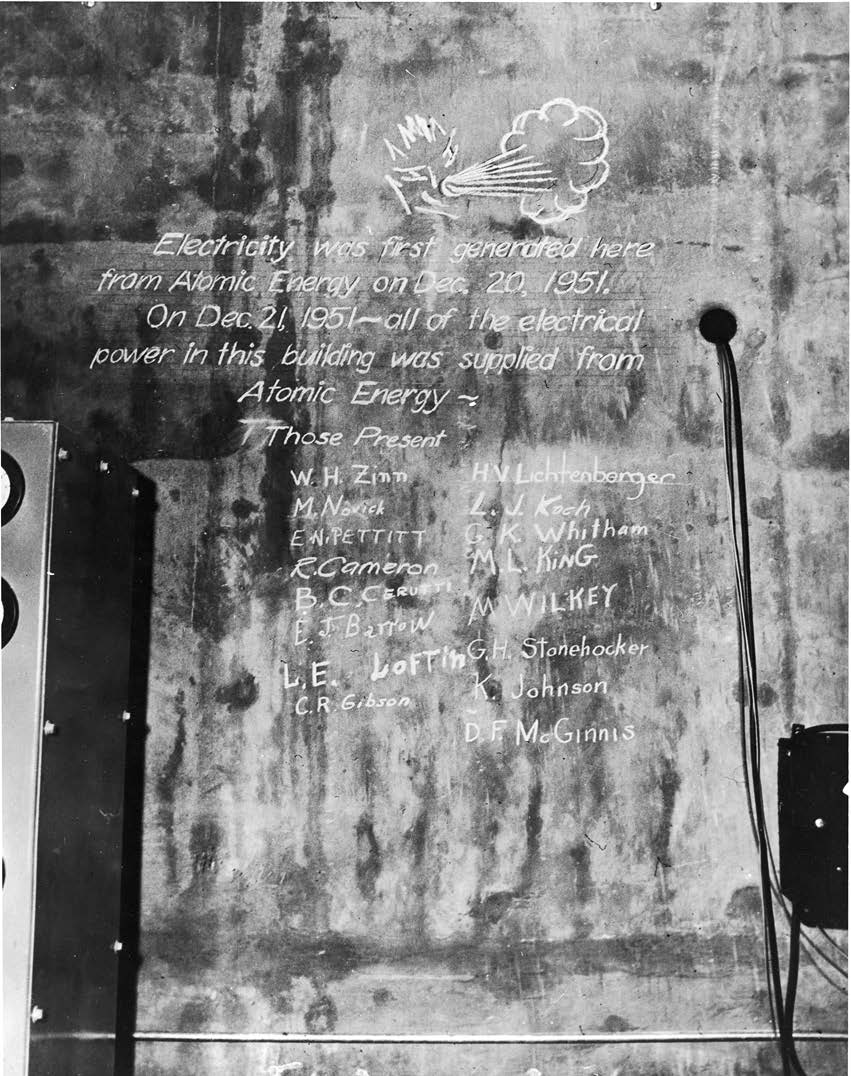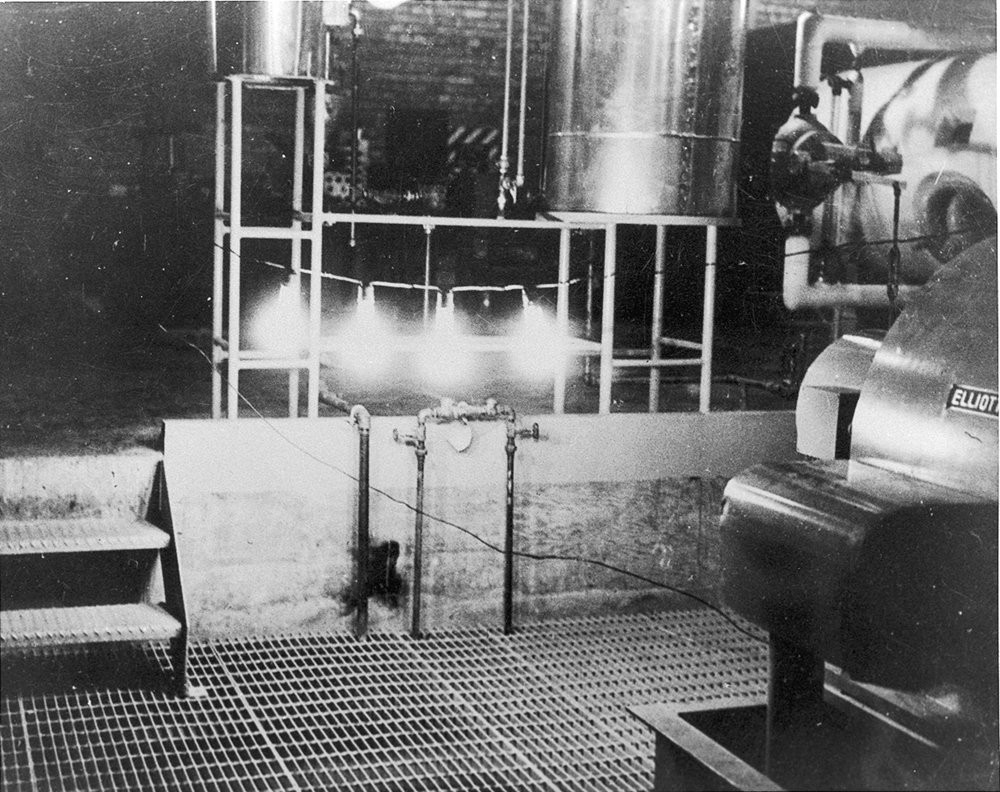In celebration of the 65th anniversary of the first peaceful use of atomic energy, the Experimental Breeder Reactor-I museum will be opened to the public Tuesday, Dec. 20.
At 1:23 p.m. on that date in 1951, nuclear power provided a generator with enough electricity to light four 200-watt bulbs. This was the first time engineers and scientists, led by Argonne National Laboratory’s first director, Walter Zinn, proved that a reactor could create usable electricity.
Earl Barrow, a machinist who was present at EBR-I that day, remembered, “We were all sitting inside the control room watching it when they flipped the oncoming line off and flipped it onto the turbine. It just took it over sweet and beautiful and then we went out there and wired the four lightbulbs to it, plugged it in and it lit up!”
The next day, the reactor was used to power the entire building. Until it was decommissioned, EBR-I provided all of the electrical needs within the building when the reactor was at power.

Over its years of operation, EBR-I reached several other important nuclear milestones. It was the first reactor built in the state of Idaho, on what was then known as the National Reactor Testing Station and the first reactor worldwide to use a liquid metal coolant system. It was the first reactor to demonstrate that plutonium could be bred from Uranium-238 at a rate equal to or exceeding that at which the Uranium-235 fuel was being consumed, proving the basic principle of breeding. In 1962, EBR-I produced electricity using plutonium as fuel for the first time.
There are ten Registered National Historic Landmarks in Idaho, and only three are standing, manmade structures. Those include EBR-I, the Assay Office in Boise and the Cataldo Mission in northern Idaho. EBR-I is by far the youngest of them all, and it was the first reactor built at the National Reactor Testing Station, which later became INL.
“I believe that EBR-I was the Kitty Hawk of the nuclear power industry from the standpoint of its real long-range potential,” said Leonard Koch, an associate project engineer at the time.
EBR-I was shut down in 1963 after Experimental Breeder Reactor-II was built to take its place. Three years later, President Lyndon Johnson visited the decommissioned reactor to officially designate the site as a Registered National Historic Landmark. This occasion remains INL’s only presidential visit. EBR-I is open to the public for free guided or self-guided tours every summer from Memorial Day to Labor Day, and it draws more than 10,000 visitors a year. The museum also features exhibits on EBR-II, Three Mile Island and the Aircraft Nuclear Propulsion Project.
The museum will be opened specially to the public for tours on Dec. 20 from 10 a.m. to 3 p.m. to celebrate EBR-I’s historic first generation of electricity. It is located off Highway 20/26 between Idaho Falls and Arco on INL’s Site. Please visit the EBR-I Facebook page for updates on weather and driving conditions.
Posted Dec. 15, 2016
By Leslie Wright for Public Affairs and Strategic Initiatives





